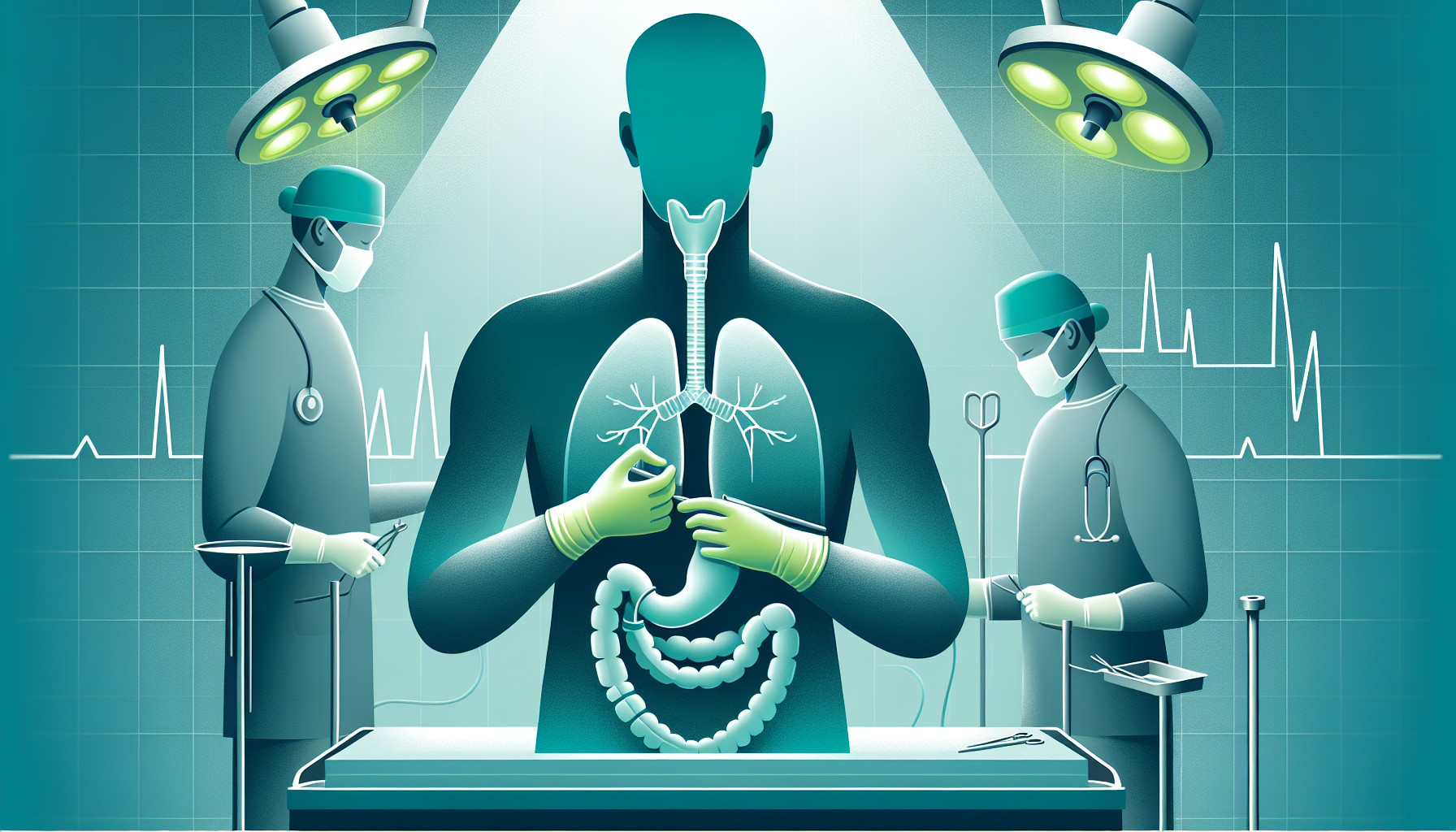Our Summary
This research paper is about diaphragmatic herniation, a rare but serious complication that can happen after surgery to remove the esophagus (esophagectomy). The researchers found that this complication is more likely to occur when the surgery is performed using a less invasive technique (minimally invasive abdominal or MIA approach) as opposed to a more traditional open surgery.
They looked at data from over 17,000 patients across 32 studies and found that the risk of diaphragmatic herniation was nearly three times higher in patients who had the less invasive surgery. This complication was also more common in surgeries done to remove tumors from the lower part of the esophagus.
Most patients who developed this complication showed symptoms at diagnosis. For a fifth of patients, this happened within 30 days of their operation, and these patients were twice as likely to need emergency repair surgery, which carries its own risks.
The paper concludes by emphasizing the importance of being aware of this risk, particularly in the era of less invasive surgeries. They suggest that doctors should be vigilant for this complication and should be ready to use imaging tests to catch it early, as failing to recognize it can lead to serious consequences.
FAQs
- What is diaphragmatic herniation and when does it occur?
- Is there a higher risk of diaphragmatic herniation with less invasive esophagectomy procedures?
- What are the recommendations given in the paper to prevent or catch early diaphragmatic herniation post-esophagectomy?
Doctor’s Tip
One helpful tip a doctor might tell a patient about esophagectomy is to be aware of the signs and symptoms of diaphragmatic herniation, such as chest pain, difficulty breathing, or abdominal pain. If any of these symptoms occur after surgery, it is important to seek medical attention promptly to prevent complications. Additionally, patients should follow their post-operative care instructions carefully and attend all follow-up appointments to monitor for any potential complications.
Suitable For
Patients who are recommended esophagectomy are typically those with conditions such as esophageal cancer, Barrett’s esophagus, severe esophageal reflux, or esophageal strictures that have not responded to other treatments. These patients may have symptoms such as difficulty swallowing, chest pain, weight loss, or persistent heartburn.
It is important for patients and their healthcare providers to discuss the risks and benefits of esophagectomy, as well as the potential complications such as diaphragmatic herniation. Patients should be informed about the signs and symptoms of this complication so that they can seek prompt medical attention if needed.
Overall, esophagectomy is a major surgery with potential risks and complications, so it is important for patients to be well-informed and closely monitored both during and after the procedure.
Timeline
Before esophagectomy: Patients undergo preoperative evaluations, including imaging tests and consultations with various specialists. They may also undergo neoadjuvant therapy to shrink the tumor before surgery.
Day of surgery: Patients are admitted to the hospital and undergo the esophagectomy procedure, which can be done using a minimally invasive or open approach.
Post-surgery: Patients are monitored in the hospital for complications and are gradually started on a liquid diet before progressing to solid foods. They may experience pain, difficulty swallowing, and other side effects.
Weeks to months after surgery: Patients undergo follow-up appointments to monitor their recovery, manage any ongoing symptoms, and assess for any potential complications, such as diaphragmatic herniation.
Risk of diaphragmatic herniation: Research shows that diaphragmatic herniation is more likely to occur after minimally invasive esophagectomy, particularly for tumors in the lower part of the esophagus. Symptoms may develop within 30 days of surgery, and early detection is important to prevent serious consequences.
Emergency repair surgery: Patients who develop symptoms of diaphragmatic herniation may require emergency repair surgery, which carries its own risks. It is essential for healthcare providers to be vigilant for this complication and use imaging tests to catch it early.
What to Ask Your Doctor
Some questions a patient should ask their doctor about esophagectomy, particularly if a minimally invasive approach is being considered, include:
- What is the risk of diaphragmatic herniation after esophagectomy, and how does it compare between minimally invasive and open surgery?
- What symptoms should I watch out for that may indicate diaphragmatic herniation?
- How soon after the surgery should I follow up with you to check for any potential complications, including diaphragmatic herniation?
- If diaphragmatic herniation is suspected, what imaging tests will be used to diagnose it, and what are the treatment options?
- What steps can be taken during the surgery to reduce the risk of diaphragmatic herniation?
- What are the potential consequences of untreated diaphragmatic herniation, and how can it be managed if it does occur?
- Are there any specific factors in my case that may increase the risk of diaphragmatic herniation, such as the location of my tumor?
Reference
Authors: Lee AHH, Oo J, Cabalag CS, Link E, Duong CP. Journal: Dis Esophagus. 2022 Jun 15;35(6):doab066. doi: 10.1093/dote/doab066. PMID: 34549284
